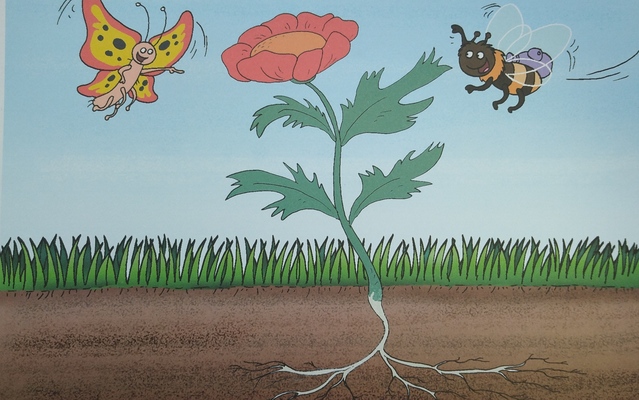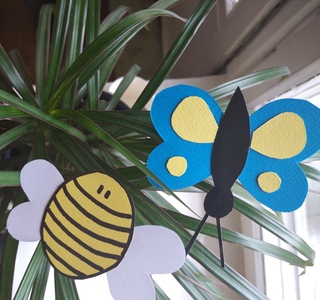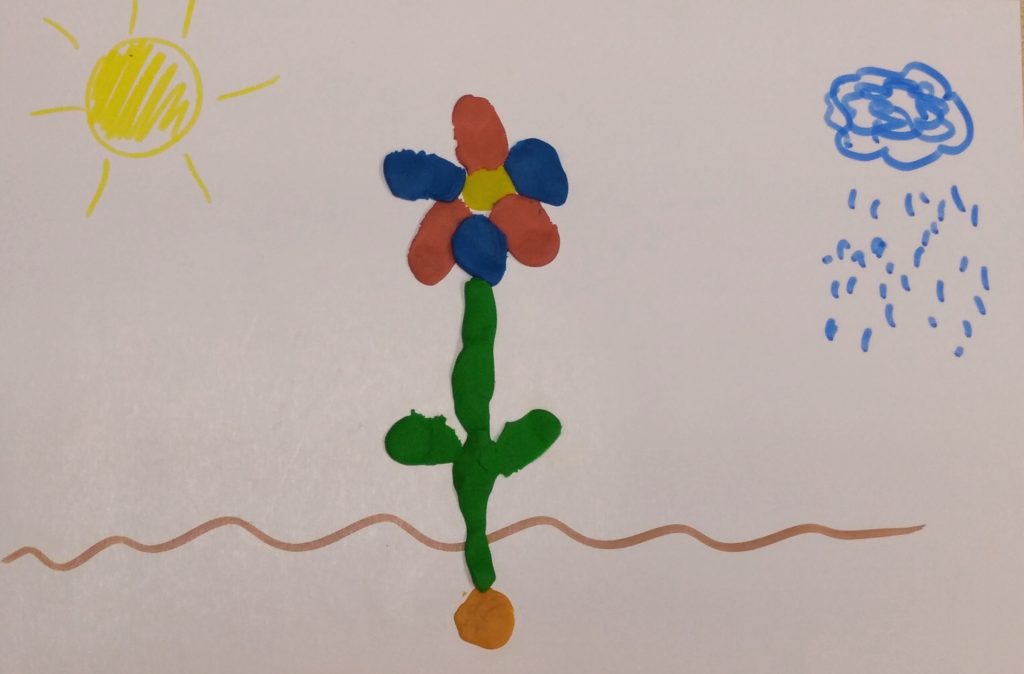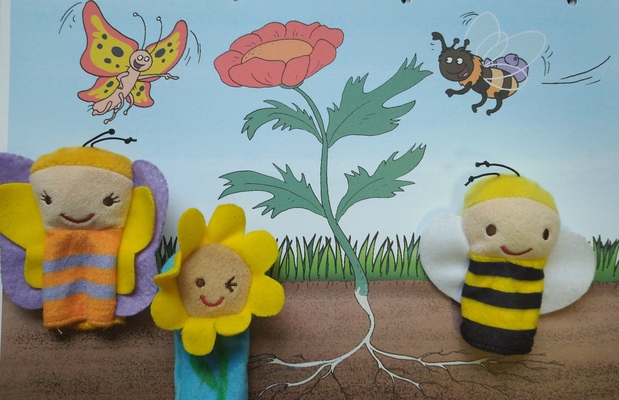
How it started?
Throughout my teaching career…oh no. STOP. No energy for all these big words.
There have been many different context in which I have met my pre-school students. There has been teaching for big schools and for small schools. There have been groups and individual kids. There have been institutions and neighbour’s and friend’s kids. There have beenn the English clubs, temporary and permanent, courses based on songs, stories, craft, Art and courses based on coursebooks.
This time, however, with my private student, Sasha (it is always Sasha:-), I found myself in a completely different place. She was already quite a mature preschooler, about to turn 6 and she was not a complete beginner. The initial reaction was that I would test her to evaluate her level and then, somehow, match it with one of the courses (aka coursebooks) that I am familiar with. Because it is just easier this way and although I am not a zealous follower of a coursebook, I suppose, I wanted to have a ready-made curriculum at hand.
There is nothing wrong with that approach, essentially, but I started to think about all the implications. I needed to find the coursebook in my country. Sasha’s parents would have to find the book in her country. She is between the levels so we would not be able to use only one book and I would have to supplement anyway. Too much hassle. I decided to let go of the coursebook and to let go of the whole coursebook-related curriculum. I decided to let the teacher (myself) off the leash and to put the student in the centre of this whole adventure. And see what happens.
After all, the whole pre-A level is like an ocean – big, surprising and pretty much uncharted and you are allowed to do whatever you want. My favourite set up, you might say.
How it’s going?
In one word, it is going great and I am having a lot of fun desigining the curriculum and adapting it to my students’ particular needs. In the beginning I did consider using some handouts and coursebooks-related materials, when applicable, but it was only an initial idea. With time, these were phased out and at this point the course materials inlcude: wordwall games, miro activities, songs and videos available on youtube and all the resources we use to develop our literacy skills, such as specific phonics platforms and resources and the notebook we used for writing.
Overall, I am very happy with my student’s progress and development, in all the areas and skills. And, apart from that, I am having a lot of fun on the way. I have especially enjoyed the freedom that this approach gives the teacher and the opportunity to find out more links and new links between different topics, themes, structures and vocabulary.
All my reflections and tips, in the paragraph below.
How to go about creating a curriculum for the EFL pre-schoolers?
- Choose a time frame for your courses in order to better manage the time and the content. With two real hours of the lesson time per week (2 x 60 minutes) available, I decided to work on the monthly basis, choosing a different theme for each calendar month.
- Make a decision regarding the target vocabulary, as regards the topic and the number of words to be introduced throughout the entire unit. This list will depend on how old the students are and how many of these words overlap with the words in the students’ L1. For example, in the topic of animals or jungle animals, words such as ‘a tiger’ or ‘a zebra’ are not new for the L1 speakers of Polish, Russian or Portuguese.
- Make a decision regarding the structures and / or the target language to be introduced and practised alongside the target vocabulary. These should be relevant to the kids’ age and life experience and, at the same time, relevant and connected to the target vocabulary.
- Select the songs, stories, videos and craft activities that could be included in this unit. This requires some research and googling but it is also a lot of fun because new videoes are created and added, more up-to-date, more fun and more EFL-friendly. There are some topics that I taught two years ago, for example, and today I use completely different materials to those that were my favourite in the past. The same applies to stories and craft.
- The coursebooks can be consulted for ideas or resources since there are a lot of lovely, ready-made resources in all the published materials but I wanted to avoid doing that, on purpose, in order not to be bound by everything that has been created so far.
- The sequence of topics as well as structures chosen has been determined by one or more of the following factors: the time of the year (Christmas, spring), student’s interests (life aquatic) and the connection between the topics. We have managed to move from one to the other, at every step revising the previous units. Some of the decisions were predictable, some of them were completely unexpected,
- This is a fully student-centred curriculum. It is a combination of what I would like us to cover and of what she is really interested in. Understandably, it is much easier to achieve with a 1-1 student and it would be slightly different with a group, although the students’ views would also be taken into consideration while shaping up the curriculum. Some of the topics appeared in a most random of way like life aquatic which we started to deal with because my student simply fell in love with orcas, dolphins and whales and I decided that not using this passion to learn English would be a waste. Apart from learning the key vocabulary and revising everything that we did in the ‘animal unit’ a few months earlier, I figured out that we could use it to learn and to practise talking about what the animals can do. We started with the basic verbs (because the ocean animals cannot really do a lot, apart from swimming, jumping and walking) but we extended later on. In the same way, my idea to introduce the topic of transport fell flat on its face and had to be directed towards the city because Sasha was not especially interested in cars, boats and helicopters.
- The course aims are as they would have been for any pre-school EFL course but I do make an effort to formulate the aims for every single lesson I teach as has been my habit and since I started, this has had a huge impact on my teaching and lesson planning. You can read more about it here.
Topics we have covered so far
- Food, fruit and vegetables and I like, I don’t like, Do you like? as well as What’s your favourite food / drink / fruit / vegetable?
- Animals: wild animals and pets, habitats and adjectives to describe animals such as big and small, fast and slow, beautiful and ugly. The main structure was the verb to be (3rd singular), used to describe the animals and to make riddles, in the affirmative, negative and question form. We also managed to revise like / don’t like while talking about the animals’ favourite food but in order to keep it coherent we used the plural form (Lions like to eat meat).
- School: school objects, rooms in the school and Present Continous to describe what we do at school. This unit was fully based on Pete the Cat, Rocking in my school shoes.
- House: rooms in the house and verbs in Present Continuous to describe where we are and what we are doing. We also revised the family members and started to talk about them.
- Weather: an opportunity to revise a few different sets of vocabulary and structures: clothes (It is sunny. I am wearing a dress), feelings (It is sunny, I am happy), objects (It is sunny. I’ve got an umbrella).
- Christmas: Christmas characters and decorations, more adjectives to describe these (long / short, cold / hot) to make riddles about these, as well as prepositions of place (in, on, under, next to) which we need to describe where the Christmas decorations were located. We also managed to go back to the rooms and Present Continuous (‘Mum is in the kitchen. She is cooking’)
- Life aquatic: different animals that live in the ocean, adjectives to describe these animals with a few body parts typical for animals (legs, a tail, a head, ears). We also started to talk about what the animals can and cannot do, starting with the aquatic animals and three main verbs (swim, jump, walk) and then extending the number of verbs and all the animals.
- Transport and the city: different means of transport and places in the city. We further extended the list of adjectives (fast / slow, loud / quiet) and we talked how we travel to different places (I go to school by car). We also revised the prepositions of place while constructing our own city (The school is in Green Street. The school is next to the park.)
- Professions: our target langauge in this unit is related to professions, although I am planning to extend it towards characters (fairy tales and people in our life). As regards grammar, this is our first step towards talking about other people. We have already covered she / he is and, only yesterday, she likes and he likes.
What’s next?
To be perfectly honest, I have no idea. This is still an ongoing project and I have not been planning it with a lot of time in advance. The professions unit is coming to an end and it seems that we are going to take it towards fairy tale characters, superheroes and ‘people’ in general as this will be a chance to revise and further reinforce the 3rd singular (to be and likes / doesn’t like). That will be our May.
As for June and July, I have not decided yet. I know that I would love to introduce some elements of the past tense and a structure to talk about the future, too, but I am not sure how it is going to go. The more immediate plans involve the extension of the current unit by revising the family and introducing a variety of fairy tales characters which will allow us to start telling stories. Then we will see. I am sure to be reflecting on it here in the future.
Happy teaching!






